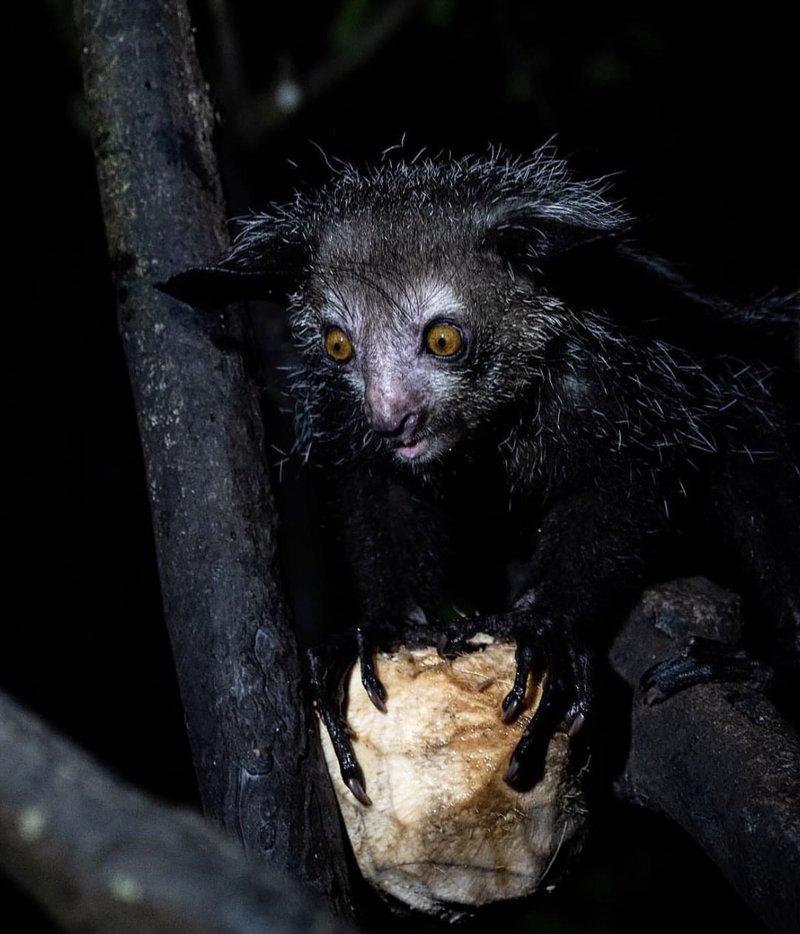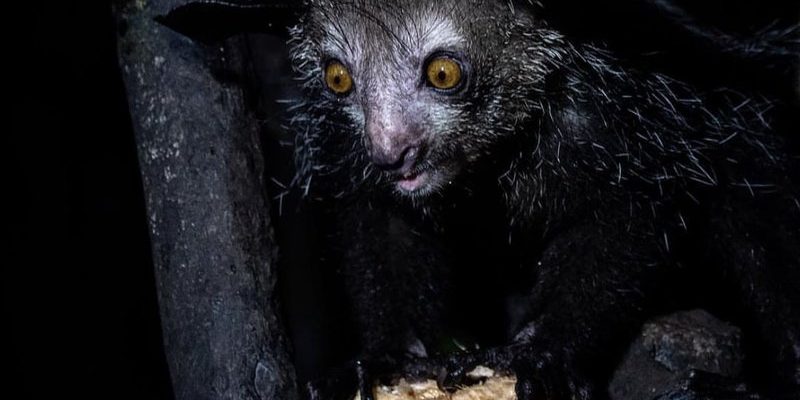
In many parts of the world, animals have special meanings and symbolism attached to them. The aye-aye is no different. Its unusual appearance and behaviors have given rise to a wealth of stories, beliefs, and myths. Let’s take a closer look at how this quirky creature pops up in various cultures and what it represents.
The Aye-Aye’s Unique Characteristics
To appreciate how the aye-aye is viewed in culture and folklore, it helps to start with its physical attributes. This lemur is easily recognizable due to its oversized eyes, which help it see in the dark, and its long, bony middle finger, which it uses to tap on trees and locate insects. Picture a tiny detective, expertly surveying its surroundings for a hidden meal!
The aye-aye primarily feeds on wood-boring larvae and fruits, using its distinctive finger to extract food from tree bark. This unique foraging method isn’t just interesting; it also makes the aye-aye one of the few primates that has developed such a peculiar adaptation. Honestly, you can see why people have created elaborate myths that weave the aye-aye into their tales.
But its strange looks and behavior can also evoke fear. Some cultures see it as an omen or even a harbinger of bad luck. With its eerie presence, it’s no wonder this animal has captured human imagination in both positive and negative lights.
Aye-Aye in Malagasy Culture
In Madagascar, the aye-aye is integral to local folklore. The Malagasy people hold this creature in a mix of awe and fear. Many believe that the aye-aye is a symbol of death or that it brings misfortune. If you live in Madagascar, the sight of an aye-aye might cause you to worry about the future.
There’s a saying that if an aye-aye taps on your house, it’s a sign that death is near. This belief has led to unfortunate outcomes for the aye-aye itself. In some villages, people have gone so far as to kill these lemurs out of fear. Isn’t it interesting how an animal’s nature can be misinterpreted?
Despite the negative views, there’s a glimmer of respect for the aye-aye as well. Some communities celebrate it during festivals, honoring its unique role in the ecosystem. This dual perspective—both feared and revered—makes the aye-aye a complex symbol in Malagasy culture.
Folklore and Myths Surrounding the Aye-Aye
As with many unique creatures, the aye-aye has inspired a variety of myths and folktales. In some stories, it is depicted as a mischievous trickster who plays pranks on unsuspecting villagers. Imagine a tiny creature darting around, eying your food stash, and making off with your snacks!
In other tales, the aye-aye has supernatural abilities. Some legends suggest it can predict the future or even communicate with spirits. This ability to bridge worlds makes it a powerful figure in folklore. It’s not too far-fetched to think of the aye-aye as a guide between the earthly and spiritual realms.
Stories like these showcase humanity’s desire to explain the unexplainable. The aye-aye’s odd traits spark our curiosity, leading to creative narratives that blend imagination with reality.
The Aye-Aye in Modern Popular Culture
Fast forward to today, and the aye-aye still captures our imagination. You can find it appearing in documentaries and wildlife films, showcasing its quirky traits. Characters inspired by the aye-aye often pop up in animated films, bringing a touch of humor with their silly antics.
One notable example is in the movie “Madagascar,” where an aye-aye character adds a cute and quirky touch to the ensemble. This representation shows how far the aye-aye has come from its folkloric origins. Instead of a fear-inducing omen, it becomes a lovable sidekick. Isn’t it fascinating how a creature can shift from an object of fear to a symbol of fun in pop culture?
Modern representations of the aye-aye help break down the myths surrounding it. Awareness and education can encourage people to appreciate this unique animal instead of fearing it.
Conservation Status and Cultural Implications
The aye-aye’s reputation has significant implications for its conservation. As its habitat dwindles due to logging and farming, the cultural myths can either hinder or help its survival. Sadly, negative perceptions can lead to the killing of aye-ayes in the wild. This highlights a critical point: cultural narratives can influence real-world actions.
On the flip side, raising awareness about the aye-aye’s unique traits can help protect it. Conservation efforts that celebrate its place in lore might encourage local communities to protect the aye-aye, like a cherished cultural icon rather than a feared creature.
By merging folklore with conservation practices, we can foster a deeper appreciation for this unique lemur. After all, it has a story worth telling—one that highlights the relationship between nature, culture, and humanity.
The Global Fascination with the Aye-Aye
The aye-aye’s unusual characteristics captivate not just the Malagasy people but also people worldwide. Social media has played a significant role in sharing the aye-aye’s story, with photos and videos that showcase its quirky lifestyle and adorable appearances. This global fascination can help shift the negative view that often surrounds it.
Many wildlife enthusiasts now advocate for the aye-aye, sharing its importance in biodiversity. The more we learn about this creature, the more we appreciate its role in the ecosystem. When we understand that every species has a role, we can begin to respect even the weirdest-looking of animals.
The aye-aye serves as a reminder that there’s beauty in diversity, even if it looks different from what we might expect.
Wrapping Up: The Aye-Aye’s Legacy in Culture and Folklore
The aye-aye is more than just a strange-looking lemur; it’s a cultural symbol that reflects the complexities of human perception. From its place in Malagasy folklore to its status in modern pop culture, the aye-aye straddles the line between fear and fascination.
As we continue to explore the world around us, creatures like the aye-aye remind us of the stories we tell and how they influence our actions. By celebrating its unique characteristics and understanding its role in folklore, we can help ensure that the aye-aye not only survives but thrives in the wild. So next time you hear about this quirky creature, you’ll know there’s much more to its story than meets the eye!

